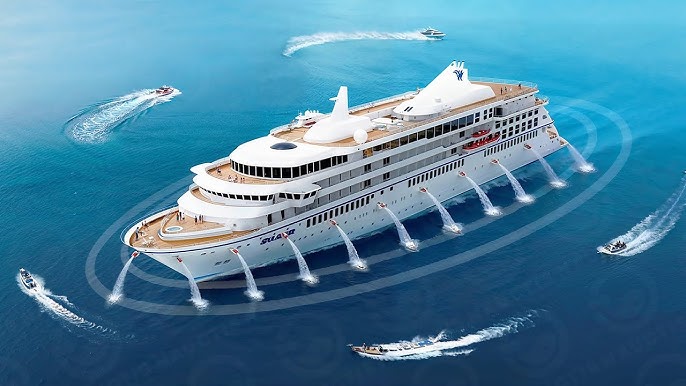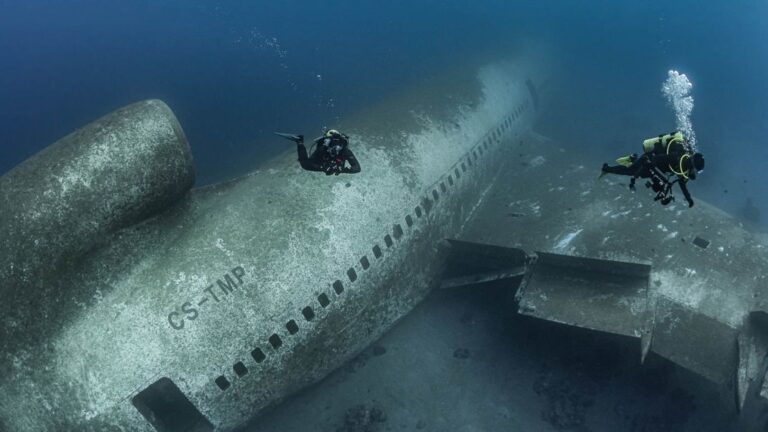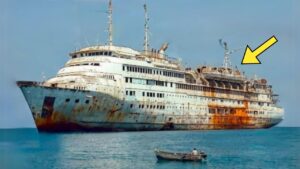On November 5, 2005, the Seabourn Spirit, a luxurious cruise ship measuring 440 feet in length, embarked on a 16-day voyage from Alexandria, Egypt, to Mombasa, Kenya, with 115 passengers onboard. But little did they know, as they sailed toward the Somali coast, the tranquility of their journey would be abruptly interrupted. Two speedboats, packed with heavily armed pirates, closed in on the ship. One of the boats opened fire while the pirates attempted to board the luxury vessel.
What followed was an intense standoff between the opulence of the cruise ship and the danger of piracy—a clash of worlds at sea. Though the crew successfully repelled the pirates, this incident raised a pressing question: how does a cruise ship, a symbol of elegance and leisure, defend itself from marauding bandits on the high seas?
In this article, we’ll delve into the fascinating and complex world of maritime piracy, explore the defense mechanisms cruise ships employ to protect passengers, and analyze why pirates continue to target vessels, even in this modern age.
Piracy: The Unlikely Threat to Cruise Ships
When you think of a pirate attack, your mind may evoke images of swashbuckling adventurers raiding ships for treasure. However, the reality of piracy today is a far cry from these romanticized notions. Modern pirates aren’t interested in capturing people—they’re after something else: money, goods, and valuables. This is why cargo and container ships, which carry huge amounts of merchandise, are their typical targets.
But in recent years, luxury cruise ships have become part of the piracy equation. The lure for pirates is simple: cruise ships are floating treasure chests, and each passenger aboard represents a potential ransom opportunity. The shift in pirate targets from cargo ships to high-end passenger vessels marks a significant change in how pirates operate.
While attacks on cruise ships are rare, the presence of pirates on the seas remains a real threat. Passengers might find themselves in the midst of a pirate attack, but the pirates’ primary goal is often not to harm people—it’s to make money. This understanding is key to appreciating the risks and the precautions cruise ships take to ensure passenger safety during such encounters.
Pirate Hotspots: Where the Risks Are Highest
Pirate attacks are not spread evenly across the globe. Some regions are infamous for piracy, particularly where shipping routes intersect with areas known for political instability or economic hardship. According to recent reports, the majority of pirate attacks occur in Southeast Asia, especially near the Straits of Singapore, which accounts for over 41% of global piracy between 1995 and 2013. Indonesia, Malaysia, and Nigeria are also known hotspots.
However, one region stands out above the rest for its long and relentless history of piracy: Somalia.
The Somali piracy crisis, which began in the early 2000s, emerged from a mix of political instability, poverty, and lawlessness. Initially, Somali pirates targeted international fishing vessels, but their operations quickly escalated to involve large commercial and cargo ships. At their peak in 2011, Somali pirates carried out a staggering 212 attacks across vast waters, spanning the Somali coastline, the Indian Ocean, the Red Sea, and the Gulf of Aden.
These attacks resulted in an estimated loss of $18 billion globally in a single year. Somali pirates would hijack ships as far as 1,000 nautical miles from Somalia’s coast and hold their crews for ransom. Between 2005 and 2012, Somali pirates raked in more than $400 million in ransom payments.
Fortunately, international efforts to combat Somali piracy—such as naval patrols and coordinated security measures—have significantly reduced the number of attacks in recent years. However, the threat has not been entirely eradicated.
Why Do Pirates Keep Attacking Ships?
The question remains: why do pirates continue to target ships, even with the significant risks involved? The answer lies largely in economics. Pirates typically target cargo ships because of the valuable goods they carry. Their goal is to hijack the ship, seize the cargo, and demand a ransom for its return.
But cruise ships, with their wealthy passengers and valuable onboard possessions, have increasingly become attractive targets. The thinking is simple yet ruthlessly effective: capture a luxury cruise ship, hold it and its passengers hostage, and demand exorbitant sums for their safe release. For pirates, this can be a much more lucrative proposition than raiding a cargo vessel.
The rise in luxury cruise ship attacks has changed the dynamics of modern piracy. It’s altered not only pirate tactics but also how global trade routes, such as the Suez Canal, are perceived. Pirate attacks have forced maritime authorities to bolster their security efforts, reshaping the maritime landscape and influencing the flow of global commerce.
How Do Cruise Ships Defend Themselves?
So, how do cruise ships protect themselves against these high-seas bandits? Given that cruise ships are much more luxurious than their cargo counterparts, you might assume that they’re ill-equipped for a pirate attack. In reality, however, cruise ships are outfitted with an array of sophisticated defense systems designed to thwart pirate attempts before they can board the ship.
1. Anti-Climb Walls
Cruise ships have adopted physical barriers called anti-climb walls. These are reinforced walls along the ship’s sides designed to make it nearly impossible for pirates to board. The walls are equipped with sharp edges or slippery surfaces, ensuring that even the most determined pirates are deterred from scaling the vessel.
2. Surveillance Systems
One of the primary defense mechanisms against pirates is effective surveillance. Cruise ships use state-of-the-art sonar, radar, and cameras to spot approaching pirate vessels from miles away. These early-warning systems give the crew enough time to initiate defensive actions or alert the authorities before pirates can close in.
3. Safe Rooms or Citadels
Many modern cruise ships feature designated “safe rooms” or citadels—fortified, secure areas designed to protect the crew during an attack. These rooms are equipped with communication devices to maintain contact with authorities, and they serve as a last line of defense in the event of a pirate boarding.
4. Sonic Cannons
The sonic cannon is a relatively new and effective addition to a cruise ship’s defense arsenal. These devices emit intense, high-pitched sounds that disorient and confuse pirates, often preventing them from approaching the vessel. The idea is to make the pirates physically uncomfortable enough to abandon their attempts to board the ship.
5. Water Cannons
In addition to sonic devices, cruise ships are also equipped with high-pressure water hoses that can spray powerful jets of water at approaching pirate boats. The force of these jets creates a chaotic and slippery environment around the ship, making it extremely difficult for pirates to board.
6. The P-Trap System
A newer anti-piracy technology is the P-Trap, a system designed to prevent pirates from boarding. This system uses thin, floating lines around the ship’s hull. When a pirate skiff comes into contact with the lines, they become entangled in the boat’s engine, disabling the vessel. This non-lethal method ensures that the pirates are neutralized without harm to the passengers or crew.
The Pirate Response Plan: What Happens If an Attack Occurs?
While all these defenses significantly reduce the likelihood of a successful pirate attack, what happens if these measures fail? Cruise ships are prepared for the worst.
Once pirates are detected, the ship’s security protocols are immediately activated. The crew communicates alerts to both passengers and maritime authorities. Emergency response plans kick into action, with safe areas being secured and trained security personnel mobilized.
If the situation escalates, armed security teams are deployed. These individuals are trained to minimize harm while neutralizing the threat. Their mission is clear: ensure the safety of the passengers and crew at all costs.
Cruise ships are also in constant communication with maritime authorities, providing real-time updates and coordinating a law enforcement response. If pirates are apprehended, they are handed over to the relevant authorities for prosecution under international maritime law.
Maritime Law: The Consequences of Piracy
Piracy is a crime with serious consequences. Different countries have varying legal frameworks for punishing pirates, but in many cases, pirates face life imprisonment or even death. For example, in Singapore, anyone caught committing piracy can face life imprisonment and even caning. In India, piracy may be punishable by life in prison or death, especially if it results in the death of others.
One notable case involved the hijacking of the FB Hala Fang 2 off the coast of Nigeria. In 2019, a federal high court in Nigeria sentenced 10 pirates to 10 years in prison, along with a hefty fine, as part of the country’s efforts to combat maritime piracy.
These cases highlight the global effort to crack down on piracy and protect the lives of those who rely on the seas for commerce and travel.
The Bottom Line: Cruise Ships Are Safe
Despite the occasional pirate encounter, cruise ships remain remarkably safe. The extensive security measures in place, combined with international efforts to curb piracy, ensure that passenger safety is always the top priority. While the prospect of a pirate attack might seem terrifying, the reality is that the chances of such an attack are slim. Cruise ships have proven that they can withstand these rare threats, and with ever-evolving defense strategies, the safety of passengers continues to be safeguarded.
So, rest assured: the next time you embark on a luxurious voyage, you can focus on enjoying the ocean’s beauty and all the ship’s amenities, knowing that you’re in good hands. The strength of cruise ship defenses, coupled with the iron fist of maritime law, ensures that safety will prevail, making every voyage an unforgettable and secure adventure.







